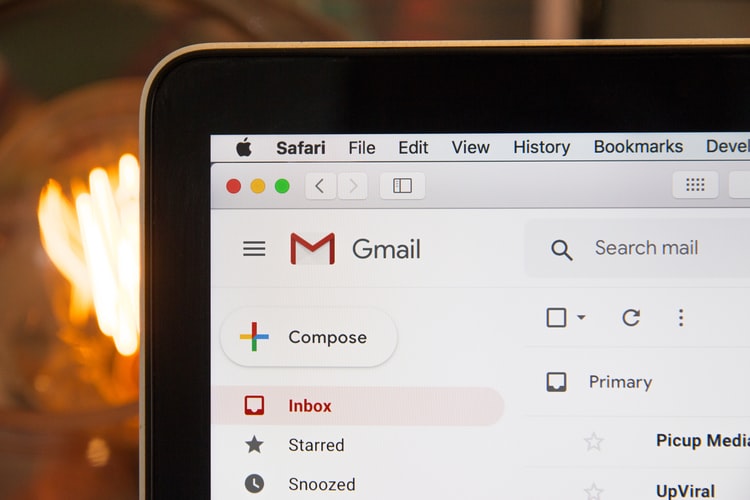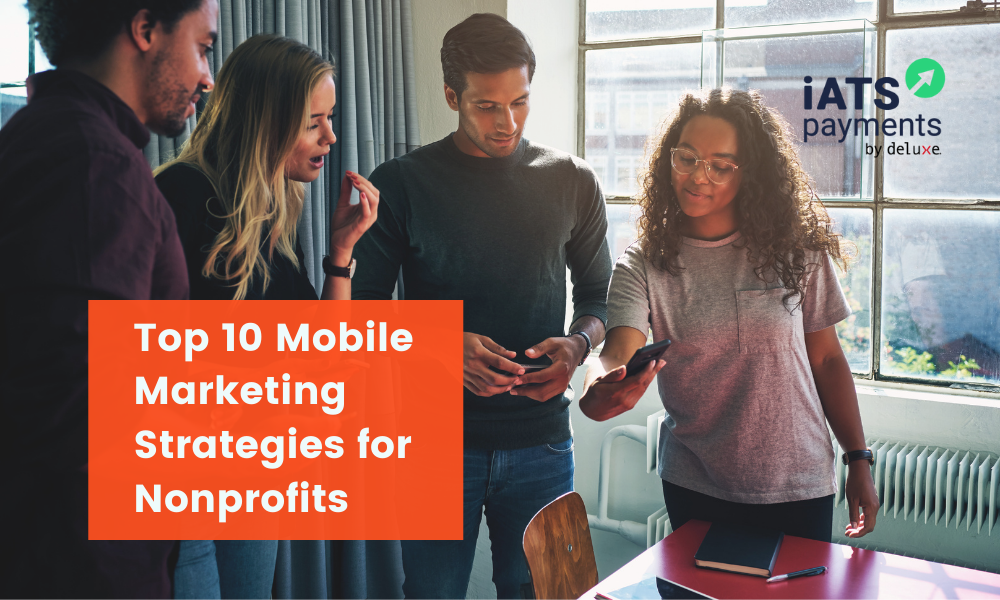By Izaak Crook, Head of Marketing for AppInstitute
Mobile marketing strategies are constantly evolving with society. A majority of businesses have adopted modern techniques to increase their presence and visibility. Being mobile isn’t just about having a website, it reaches out and engages with your donors in innovative ways. charitable organisations have seen a flood in mobile giving donations.
As a matter of fact, in the past year mobile giving donations have increased 205%. Below is a list of the top mobile marketing strategies for charitable organisations.
Marketing by Email
A marketing strategy that has high engagement and delivers a strong return on investment (ROI) is email. For nonprofits and charities, there are many opportunities to make email marketing strategies particularly engaging for their target audiences, as well as more financially rewarding. Nevertheless, it mustn't be one type of email. Consider different journeys and the messaging that is appropriate for each of these. For example:
- Welcome emails for people just signing up.
- Emails tailored to those who have started donating.
- Updates on what you are doing.
Emails can nurse people towards making donations or thanking them for already doing so. Also, it is a chance to allow you to continue telling people your story. For more tips, check out Email Marketing for Nonprofits - Tips to Get Started.

Get Posting on Social Media Platforms
Social media has grown into one of the largest channels out there. Predominantly, due to it becoming a part of people's everyday lives. This means that you cannot discard the use of it to elevate your organisation. Social media helps connect you to a wider demographic and each platform has different users that will allow for different audiences to spread your message. Social media allows for:
- Telling your charity's story.
- Starting conversations with donors.
- Raising awareness about your organisation.
Social media can also be a useful tool to help address your audience's needs, as well as the organisations and when done correctly can lead to achieving organic reach and followings.

Entering the Mobile App Market
Apps have become essential for a majority of businesses to allow them to reach people a lot more efficiently. With only 25% of UK charities accepting donations via their mobile apps, it remains a largely underused strategy that could benefit charities to reach a younger demographic. According to a survey by Moneymailme, 72% of 18 to 25 year-olds would give to a charity via a mobile app if they had the option to do so. Moreover, with tools like AppInstitute making it easier than ever for charities to make their apps in a matter of minutes. It will allow for your charity to build a customisable app that will:
- Take Donations
- Allow users to submit forms to your charity
- Create custom content
- Take questions from users through your messaging service
- Use push notifications to send updates about what your charity is doing.
- Allow you to sell merchandise by setting up a mCommerce store.


Mobile Giving
With 28% of donors saying they would rather make donations via their mobile devices. Organisations must start enabling donors to be able to make donations through their devices. Mobile giving grants nonprofits another way to interact with their donors by:
- Using text messaging as a form of communication.
- Connecting with the younger, more mobile-savvy demographic.
Mobile giving also allows charities to enable donors to give money wherever they have internet access. Which in theory would present a shorter turnaround time and higher conversion rates? Since technology is rapidly advancing the fundraising landscape has shifted; 73% of charities have now said that street giving is failing and mobile payments have increased. Therefore, charities need a reliable and secure service which will allow them to accept donations easier. iATS Payments by Deluxe® is an all-in-one payment solution that lets organisations handle donations on one platform and is trusted by over 14,000 nonprofit customers. For more information - visit the iATS step-by-step payment product guide.
Creating a Multi-Functional Website
To optimize your digital activity. First, you must know who your audience is. This should begin with a website. Websites need to convey who you are, what you do, and why people should care as swiftly and concisely as possible. Visitors to your website may already understand your organisation from previous experiences. Nevertheless, many others will be encountering your organisation for the first time and have no prior knowledge of who, what and why you exist. SEO must be taken into consideration, your site needs to be searchable and keyword optimized so it can be discoverable. Additionally, charities must make sure that their websites are mobile compatible, due to 1 in 4 donors using mobile devices to discover nonprofits they were previously unaware of.


Artificial Intelligence (AI) - Chatbots and Personal Assistants
Artificial Intelligence is allowing charities to bring huge opportunities. Charities can start using AI by adapting to the growing number of AI personal assistants or chatbots. An example of this is how Arthritis Research UK has partnered with Microsoft to pilot a service based on their IBM Watson AI. The system allows a computer to talk to a person - and combined with information resources to provide users with tailored answers to questions regarding the condition. By adopting AI it allows your organisation to be more accessible, as there is no danger of an engaged phone line.
Embracing voice search
With the growth of voice search and the accessibility of searching by voice on our phones at all times. It is predicted that half of all searches over the internet will be voice-based by 2020. Like many innovations, the inclusion of voice donations may still be in early phases and will take time to reach critical mass, due to a certain level of trust that is required. However, for charities, the inclusion of embracing voice search will enable to target a more tech-savvy based audience as they will be more likely to find something that will fit into their daily lives and make a task like donating easier and quicker.

Exploring Virtual Reality (VR)
Exploring VR has allowed charities to develop immersive and captivating experiences for audiences to allow for a bigger impact. For campaigns and marketing strategies the primary goal is to highlight the problem and draw attention to the issue. Whilst donations are the most important thing to any charity, learning and educating can help increase donations. By learning and educating people it increases awareness and allows for the problem to be recognised. As of today, telling the problem just is not enough, it needs to be shown to understand the depths of the crisis. By using VR, it allows for people to find themselves inside the crisis and develop empathy and the desire to help. A great example of this is Charity: water who used a VR movie at a black-tie event at the Metropolitan Museum of Art and managed to raise over £2.4 million in donations at the event alone.


Getting Visual
With mobile video usage increasing by nearly 10 million daily viewing minutes in the last two years. Charities have a huge opportunity to be able to promote their organisation's message through video. Since video content will make up a staggering 82% of all consumer internet traffic by 2022. Charities can utilise video to:
- Build Trust - Videos are a great way to showcase what you do, who you have helped, where the money goes and who you are working with.
- Get Personal - Videos encourage empathy and emotions, which is difficult to convey with other methods of marketing.
- Grab Audiences Attention - The average attention span of a viewer is around 8.25 seconds. Therefore, a video can rationalise an abundance of information which can help people analyse the information quicker and help formulate trust.
Start Blogging
Audiences and donors want to feel a part of the family. They want to understand and digest everything your charity is offering and how they can help. Blogging for your organisation is the fastest most effective way to provide information about your cause. Be sure to always make your blog fresh and attractive so readers will want to contribute. Below is a list of content that will help keep your blog relevant so that readers won’t become bored and slip away.
- Putting a face to your charity - Blog posts that feature real people that have benefited from your charity.
- Tell people how to help - Highlight all the possible ways donors and supports can help your organisation.
- Stir up conversations - Ask questions that challenge the reader to start discussing the issues.
- Go behind the scenes - Show what you do behind the scenes. This can help build and generate trust between the organisation and the reader.


Finally, to be successful in garnering awareness and donations. It is crucial for charities to implement, who they are, what they are doing and why people should care throughout their marketing strategies. This will allow them to connect with audiences and provoke empathy and a motive to donate to your charity. Additionally, people want to make sure they are seeing benefits from their donation, so it is important to highlight how donations can help your charity and how their money is helping the cause.



 Support Center
Support Center